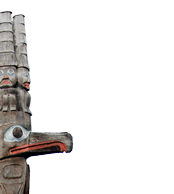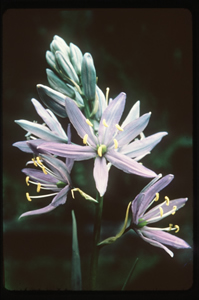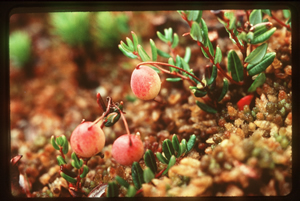 |
|||||||||
 |
|||||||||
 |
|||||||||

Songhees |
||
|---|---|---|
The natural environment surrounding Thunderbird Park used to be what biologists call a Garry Oak ecosystem. In the past, as in the present, this ecosystem did not exist in isolation from human influence. The Lukwungen First Nations burned off the landscape every fall to promote future harvests of the edible camas bulb, as well as other plants. Swamps and bogs in the vicinity provided rushes and other water plants that were used to make a variety of objects. |
||
 |
Camas in bloom. A rich source of sugar, the edible camas bulb grew abundantly in the area of Thunderbird Park. |
|
 |
Cranberries were among the food plants that grew around a small lake that once covered low-lying areas of Victoria’s Fairfield neighbourhood. |
|
 |
Pacific Willow was gathered in nearby swampy areas. It was used to make rope for tying anchor stones. |
|
